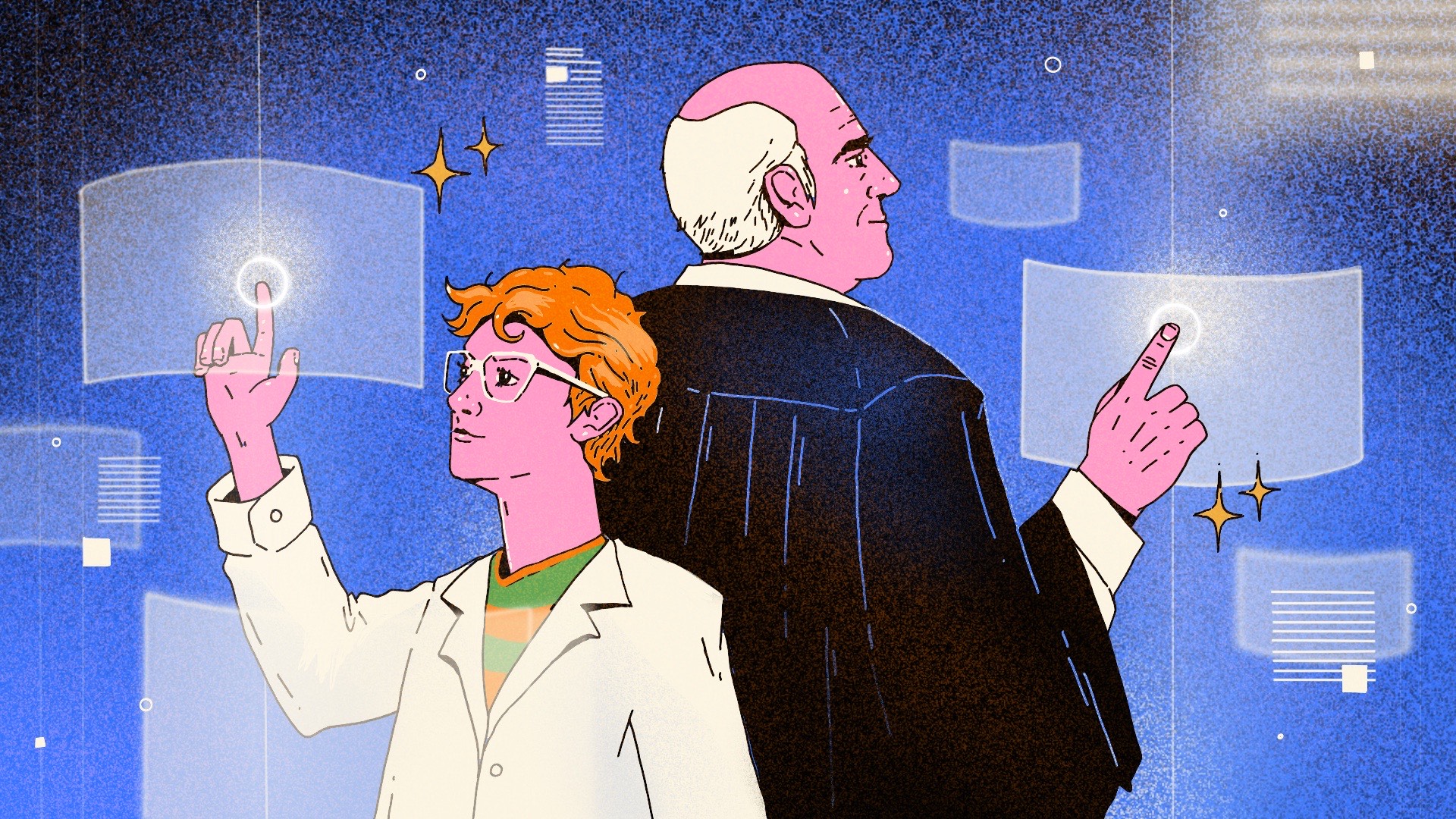By providing quick and well-formulated answers, tools such as ChatGPT challenge traditional educational methods. Can these same tools – with all their risks and controversies – offer opportunities to improve teaching and learning processes? Fundar and PENT Flacso explored the possibilities and limitations of using ChatGPT in the classroom. We developed a pilot to test didactic proposals, feasible to be implemented in real contexts, that make use of AI beyond a consultation tool.
Illustration: Papanika.
AI and ChatGPT: allies or threats to school learning?
The rapid spread and free access to tools such as ChatGPT are causing both excitement and concern in education. Their emergence challenged traditional methods of assessment, such as essay writing. By providing quick and well-formulated answers, its use risks reducing the development of critical thinking and essential communication skills, such as reading comprehension and the ability to express ideas. Can this tool transcend its novelty and play a broader and more enriching role, beyond the simple resolution of consultation tasks?
The strengths and weaknesses of these tools have a direct impact on the pedagogical effects and should be considered when designing specific interaction modes or roles with students.
Contributions of AI
Generative Artificial Intelligence (GAI), on which tools such as ChatGPT are based, has a wide range of applications that can be exploited by the education sector. It enables the creation of new content from existing data, generating relevant and contextual material in real-time. It not only simulates highly realistic dialogues, but also identifies and analyzes concepts in texts, translates, and relates ideas effectively. Moreover, in “chat” mode, interacting with this system resembles a human conversation, making the experience intuitive and fluid.
Risks and challenges of AI
However, these tools present significant challenges in terms of accuracy and reliability. One common problem is hallucinations: situations in which the model, when attempting to complete sentences, may produce responses that appear plausible or reasonable, but are inaccurate or irrelevant because they are not based on factual data, or because of a lack of tool-specific skills (such as mathematical problem solving). Another critical challenge is whether cultural, gender, racial, or otherwise present in the training data, which can be reflected or even amplified in the responses it generates.
Application of AI to learning environments
This project set out to design and implement didactic strategies using ChatGPT, starting from a student-centred pedagogical approach and taking into account the feasibility of implementation in the real context of a concrete classroom. This was done to evaluate its functioning in the classroom, to know its limitations and risks and, finally, to generate learning concerning its use as a powerful didactic resource.
Design of a pilot test
The pilot test sought to encourage direct student interaction with ChatGPT in the classroom context and roles beyond simple task-solving.
Considering the risk of bias, it was chosen to have the AI behave as fictitious, but archetypal, characters that would be interviewed by the students. In this way, any bias that the AI might manifest would be perceived as part of the character’s personality, and not as a problem with the model itself.
The starting point was the simulation of the interview. Based on this, a didactic sequence organized in four moments was designed.
Moment 1
Survey of previous knowledge, introduction of the topic and outline of problematic questions to be asked to the fictitious character.
Moment 2
The general explanation of the work assignment, contextualization of the task, and presentation of the AI-generated simulation.
Moment 3
Collaborative production in small groups: interviewing simulated AI characters (one character per group is assigned), summarizing the interviews and communicating the main ideas.
Moment 4
Sharing.
Once this general structure was established, the adaptation of this scheme to two selected contents (Environment and Democracy) was defined and pilot tests were carried out at primary and secondary levels (in a total of four scenarios).
The central core of this experience was moment 3 when students interacted with the ChatGPT. The most relevant challenge in this instance was to define what characteristics the characters simulating ChatGPT should have. It was decided that this moment should be carried out in small groups to promote interaction among students.
Contributions to the use of ChatGPT in educational environments
The experience caused a significant change in the perception and attitude towards the tool of both teachers and students.
Originally, students used it without the teachers’ knowledge or approval. After the intervention, teachers began to see ChatGPT not as a tool to be avoided, but as a valuable pedagogical resource.
This change in perception arose from the recognition that ChatGPT can be effectively integrated into the curriculum, fostering student curiosity and engagement. In contexts where use occurred with careful consideration of its limitations and potential biases, it promoted deeper reflection on the ethical and conscious use of AI technology.
Contributions to learners: contributing to the development of fundamental 21st-century skills.
These tools have significant potential to contribute to the development of “21st-century foundational skills”, i.e. critical abilities and attitudes for success in a rapidly changing world.
Critical Thinking
By interacting with answers generated by ChatGPT, students learned to formulate questions more accurately and to critically analyze the answers obtained.
Communication
The character simulation encouraged students to express themselves clearly and effectively, both verbally and in writing, fostering the ability to communicate complex ideas and discuss abstract concepts.
Collaboration
Working in small groups allowed them to share different perspectives and learn from each other, reinforcing the importance of working together to achieve a common goal.
Creativity and innovation
The activity allowed students to experiment with new technologies and apply them in innovative ways in the classroom.

